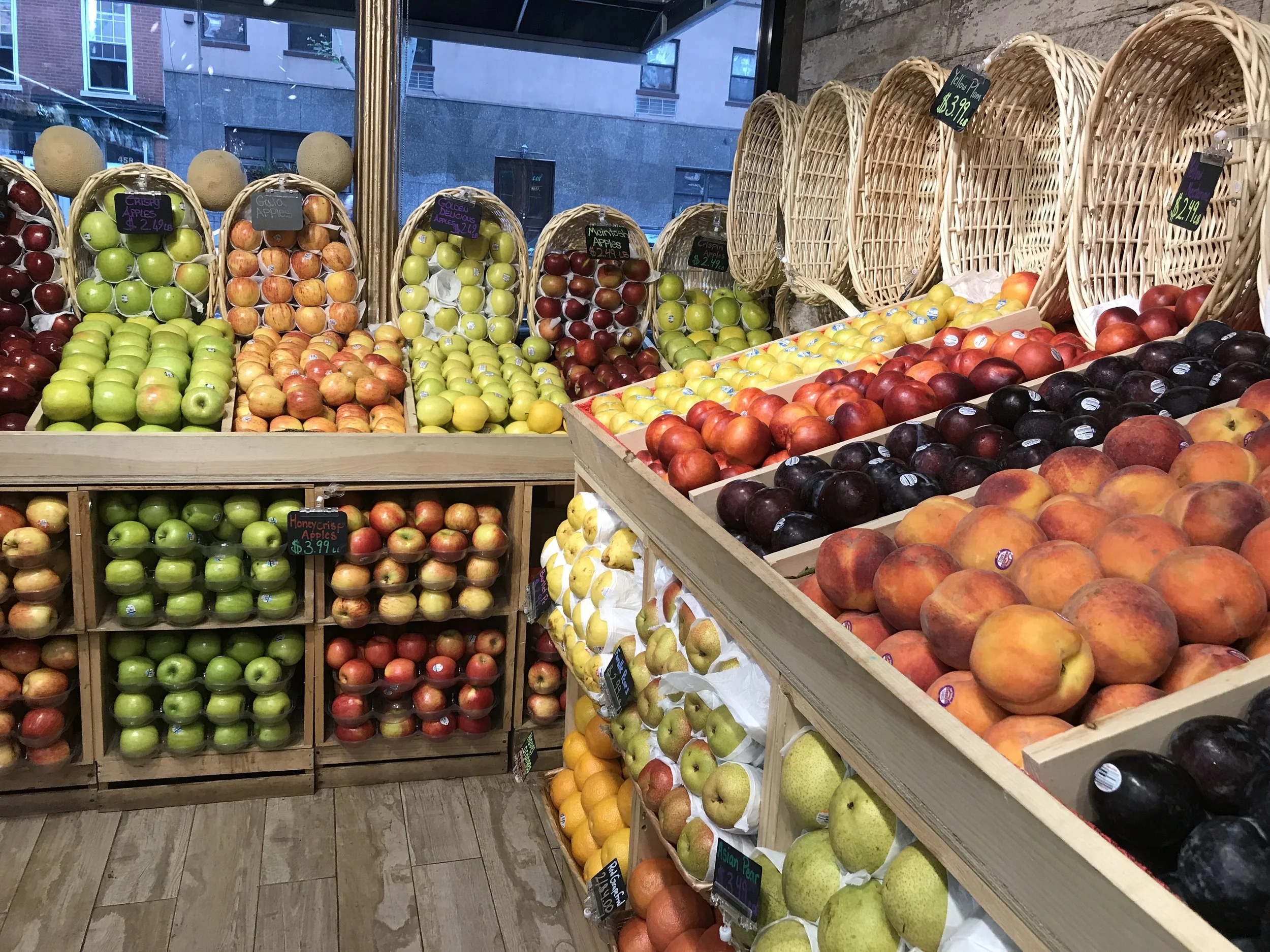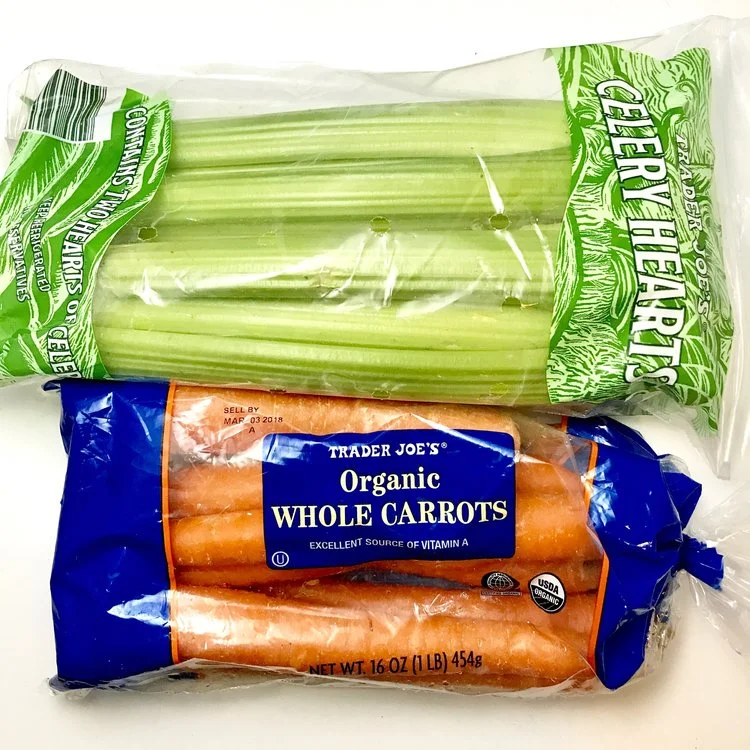Seasonal Fall Produce
The lists below detail produce that is currently in season. Seasonal fruits and vegetables will taste better, last longer and be more affordable. Have you ever bought strawberries in the winter? They're expensive since they're harder to source. Not only that, out of season produce doesn't last nearly as long. My advice is to buy frozen produce when it is out of season. Actually, I prefer to stock my freezer with fruit and veggies year-round, especially before traveling. This way, I always come home to a kitchen full of healthy food. This tip also helps to cut back on the number of grocery runs I need to make. Fewer grocery runs mean less impulse purchases and more money saved.
Be cautious with canned fruits and veggies as they are often loaded with unnecessary salt, sugar and preservatives. Make sure to read the ingredients on the labels to know exactly what you're getting. It's wise to rinse canned produce with water before eating to eliminate some of the excess salt and sugar. When buying canned beans, I find the organic to have significantly less sodium than non-organic. Some fruits are conveniently canned as pie filling. If so, you can bet they contain sugar and some sort of preservative, such as the label below.
Ingredients:SLICED APPLES, WATER, SUGAR, MODIFIED CORN STARCH, CINNAMON, ERYTHORBIC ACID (TO PROMOTE COLOR RETENTION).Benefits of eating seasonal produce:
Cheaper
Fresher
Higher nutritional value
Longer shelf life
Less transportation / carbon footprint
These points go hand-in-hand. When a particular food isn’t in season locally, it must be transported in. Longer commutes mean higher costs, shorter shelf lives and the less fresh it will be by the time it hits your plate. All around, eating in-season produce will always be your best bet.
Organic or not, the most important factor is that you’re shopping the perimeter of the store. Non-organic, out of season green beans are still a healthier option than anything processed.
As always, remember to hydrate. Obviously, drinking water is the easiest way to do this, however, consuming water-rich foods such as celery, cucumber, and melon count towards your daily intake as well. As the days grow colder, our instincts are to gravitate towards heavy, comfort foods. Go ahead, treat yourself to mac and cheese occasionally. More importantly, treat yourself to a fair share of fruits and vegetables each day. You deserve it. There’s no greater treat than good health.
SEASONAL FALL PRODUCE
FRUITS:
Apples
Avocados: year round!
Bananas
Berries: cranberries, raspberries, strawberries
Dates
Grapes
Kiwi
Lemons: year round
Lime
Olives
Oranges: year round
Pears
Plums
Pomegranate
VEGETABLES:
Artichokes
Beets: year round
Broccoli: year round
Brussels sprouts
Carrots: year round
Cauliflower: year round
Celery
Garlic: year round
Kohlrabi
Leafy Greens: arugula, cabbage, collard greens, endive, kale, mustard greens, spinach, Swiss chard: year round
Mushrooms: year round
Onion: leeks, scallions, shallots: year round
Parsnips
Peas
Peppers: all (sweet, chili)
Radishes: year round
Rutabaga
Sunchokes
Sweet potatoes
Taro Root
Turnips: year round
Winter Squash: acorn, butternut, pumpkin, spaghetti
SEAFOOD:
Clams
Cod
Flounder
Hake
Halibut
Lobster
Oysters
Prawns
Scallops
Swordfish
Tuna
NUTS:
All: year round (almonds, chestnuts, pecans, pistachios, walnuts, etc.)
OUT OF SEASON (to name a few):
Apricots
Asparagus
Berries: blackberries, blueberries, mulberries
Cherries
Corn
Fava: beans & greens
Grapefruit
Green Beans
Guava
Pea Shoots
Pineapple
Rhubarb
Summer Squash: yellow, zucchini
What’s the deal with pumpkin?
Fall is the official season of all things pumpkin. Walk the aisles of any grocery store and you’re bound to find pumpkin-flavored beer, coffee creamer, cookies, waffles and granola bars - you name it, you can find it. While pumpkin itself holds many health benefits, you can be sure these packaged novelty items have been stripped of them. Consume sparingly.
Benefits of pumpkin:
Anti-inflammatory properties
Rich in antioxidants
Packed with vitamins and minerals
High in fiber
What’s in pumpkin spice anyway?
Cinnamon
Ginger
Nutmeg
Allspice
Cloves
Cardamom
So, the deal with pumpkin is that it’s delicious and can be healthy. Go crazy with pumpkin puree in homemade recipes. Add it to your morning oats, muffins and smoothies and season with store-bought pumpkin pie spice or blend a combination of the spices above to make your own.
The last day of fall is Friday, December 21.
-Mallory
SOURCES:
Hart, J. (2014). Eat pretty. San Francisco: Chronicle Books.
Seasonality Charts. (n.d.). Retrieved from https://cuesa.org/eat-seasonally/charts







